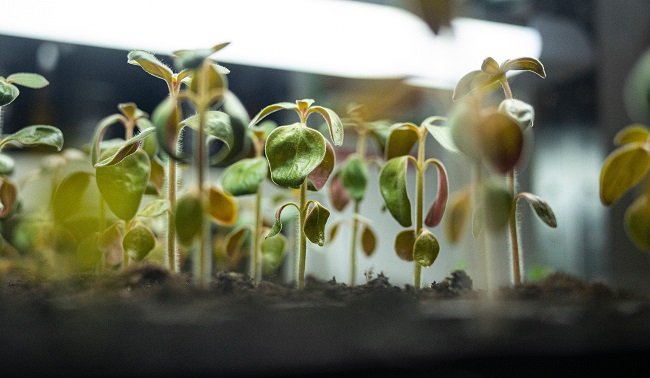
If you haven’t already contacted the nearest USDA Cooperative Extension Service, it’s a good first step in determining what plants are going to work well in your area. They have a wealth of local information such as the average first and last frosts, when to plant, how much to plant (based on the number of people you are feeding), and usually offer services such as soil testing. If you already know what you want to grow, you’ll be able to choose the correct seeds for your garden. These are the broad categories you will likely encounter when selecting seeds.
Buying “Organic” means supporting organic farming. Seeds are grown using ecologically sound practices under certified organic standards. Organic farmers rotate crops and grow without synthetic pesticides, herbicides, or chemical fertilizers. This lack of chemicals is one of the most common reasons for buying organic. Plants grown for seed are often treated more frequently and heavily than their counterparts sold for food.
Open pollinated seeds give plants that will produce more seeds you can use the following year and expect a very similar plant. Vegetable varieties will reproduce by either cross-pollination or self-pollination. Vegetables that reproduce by cross-pollination need to be isolated from other plants to avoid cross-pollination if you want to keep the same variety going. A general definition of Heirloom vegetables are varieties that have been grown for at least three generations. Heirlooms are always open pollinated. Planting and saving seeds from heirloom vegetables is a way to help keep our quickly disappearing food crop diversity alive.
Hybrid plants, also called “F-1” varieties are the first generation of offspring plants produced by a cross of two or more genetically different plants within the same species. Hybrid seeds are expensive because it takes years to create a pure line. The result is offspring with specific characteristics such as higher or earlier yields. Many of our modern-day plants are a result of these crosses. Hybrids are very consistent from plant to plant but if you replant seeds from hybrids, you get a mixture of inferior varieties.
GM or genetically modified seeds are created by manipulating the genes of the plant using molecular genetics techniques in the laboratory. These techniques have improved cultivation, nutritional content, and harvest. They’ve even produced corn with the pesticide engineered right into the genetic makeup. Through genetic engineering, we can create plants with an exact trait very rapidly. There are only a handful of food crops with GM seeds commercially available, but they are widespread. A huge portion of the corn, soybeans, cotton, canola, and sugar beets are genetically modified. Other GM options are squash, papaya, and alfalfa for animal feed.
If you don’t already have a reliable seed source, I recommend starting with Seed Savers Exchange. This is a non-profit group, and your purchase helps the cause of saving and sharing heirloom seeds.
Angela Lundmark is a freelance writer that enjoys outdoor and indoor gardening.
Related Articles & Free Email Newsletter
Get an Early Start on Your Garden With a Cold-Frame Greenhouse




Comment here